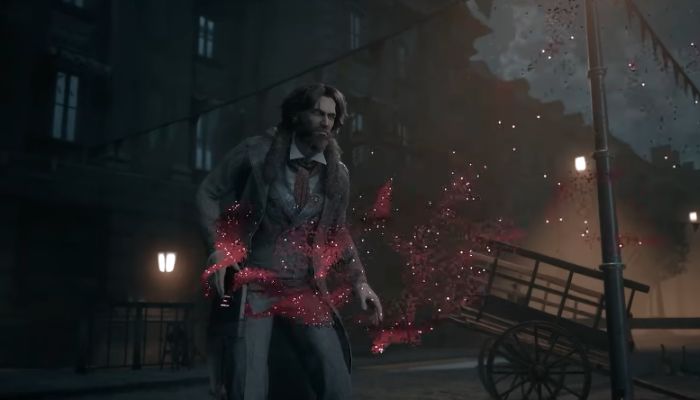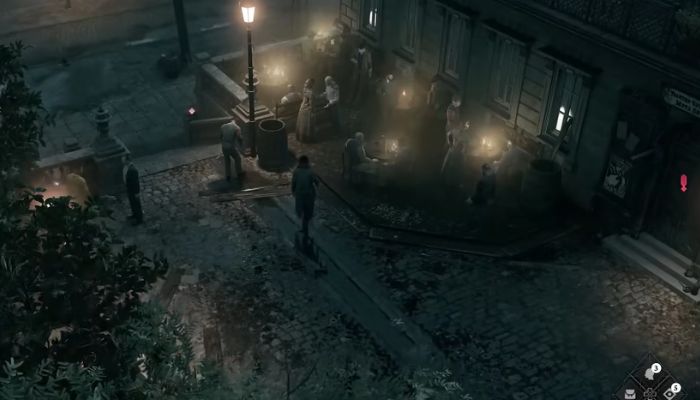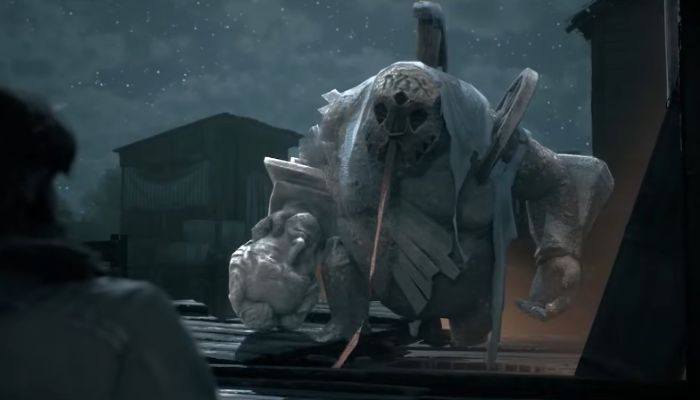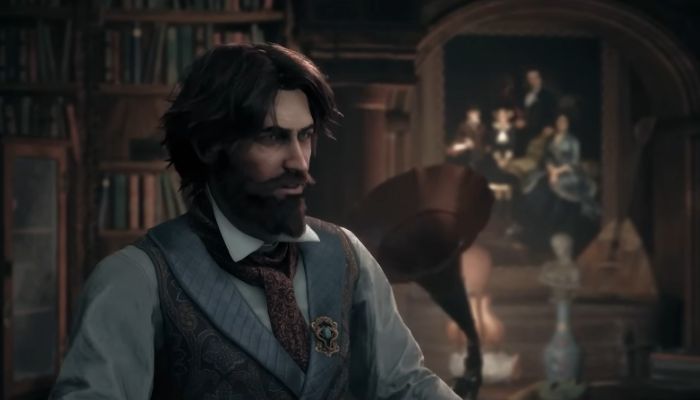The Thaumaturge is not a simple RPG, but it is a masterpiece that comes with historical background woven into the playing process. This isometric role-playing game was created by 11 Bit Studios and a player will find himself in the Warsaw of year 1905 in which the earth is full of enigmatic energy actions and the majority of decisions are rather vague. In this review, we focus on the features that make The Thaumaturge different from other RPGs; gaming mechanics in this game; and the special characters that fill the game’s narrative world.
What Makes The Thaumaturge a Unique RPG by 11 Bit Studios?
Exploring the Concept of Thaumaturgy in Gameplay
Based on a work of fiction, the novel revolves around the existence of thaumaturgy, which is a type of magic that renders certain people, referred to as thaumaturges, capable of altering reality. Introducing a new measure of giant-strategy in this gameplay mechanic, players utilize the powers of entities known as ‘salutors’ to combat adversaries, and to complete missions as required. It is a fun aspect of each salutor since it has different powers; therefore, players can choose their fighting and puzzle-solving strategy. The game’s very protagonist, Wiktor Szulski, shows an example of how the art of thaumaturgy can influence the gameplay, offering a unique experience for the audience that engages them in critical thinking relating to their actions.

The Role of Historical Context in The Thaumaturge
The events described in The Thaumaturge take place in Warsaw of 1905, and thus the realistic component of the novel incorporates historical facts. Speaking of a unique setting, it determines not only the overall plot but also contributes to the evolution of the characters and dictates gameplay. For example, players will meet historical characters, and while some of them are based on real people, some are the inventions of the creators to enrich the portfolio and reflect real conflicts and social changes of the late 1980s. The aspect of the game is that Poland has always been a melting pot of different nations and the townspeople and high society join the battle for rights regardless of their status, making it a personal fight.
How Does The Thaumaturge Compare to Other RPGs Like Witcher?
Comparing The Thaumaturge to some of the other successful RPGs like The Witcher series one can see that both games are focused on providing a deep and rich story and realistic characterization of the main characters. But the main principle that makes The Thaumaturge stand from the crowd is the turn-based system and Isometric scheme. Whereas the first one transposes the players into real-time action, the second one promotes them to thinking tactically. It is possible to have a distinctive, extended pacing that draws on the material’s morality-grayed systems decisions, as well as an open world filled with cause and effect consequences.
What is the Gameplay Experience Like in The Thaumaturge?
Understanding Turn-Based Combat Mechanics
The Thaumaturge uses turn-based combat where the player is expected to make rational decisions during fights. None of these approaches resembles actual battles, during which people act impulsively, hastily, and without much thought, but it enables players to study the battlefield, think through their strategies, and leverage their salutors’ special abilities to the fullest extent. These ideas are quite understandable in the context of executives arguing that each opponent is unique and demands a proper approach and the identification of their flaws. This strategic layer adds to the whole combat experience in a way that makes every fight satisfying.
Key Features of the Isometric Gameplay Style
Isometric view in The Thaumaturge offers a clear perception of the level’s complexity and offers a deep-look at the detailed environment that represents Warsaw in 1905. It is useful from this perspective to deepen it because it allows players to perceive the artistic concept and explore different environments. In keeping with isometric gameplay style, movement opens up areas and tactical positioning in battles is unarguably an important component of gameplay.

What Quests Can Players Expect to Encounter?
The quests in The Thaumaturge are these: By offering the reader the variety of quests and enriching the game’s historical setting, the authors convey its moral grayness. As for the gameplay, players can expect to carry out missions involving such things as solving supernatural events and schemes, as well as handling the complicated sphere of the affluent society. Most of the game’s quests construct the player for prevariating ethical dilemmas that make them to think about the consequences of their actions. Such a depth helps to make the story more engaging and Branching options make the game even more replayable.
Who Are the Main Characters and Foes in The Thaumaturge?
The Role of Salutor and Other Thaumaturges
The mentioned characters are the prominent salutors and other thaumaturges, accompanying Wiktor Szulski, the game’s protagonist, on his way. Thus, each salutor has his or her unmatched skills featured during the game, so the interaction of powers takes place. It will be observed that these are beings with whom players have to establish relationships because they assist them and improve battles. These interactions make the stakes of the narrative more emotional and add to its complexity: Wiktor’s transactions with his salutors.
Who Are the Major Foes Players Will Face?
Much like in a real life, the environments in the game are divided between the daylight and the night time which, the residents of Warsaw use the unlit alleyways and twisted roads to reveal a number of enemies to Wiktor – supernatural creatures and persons with unclear morality. One of the most important antagonistic types is the upyr, which is described as a powerful and terrible creature of Slavic origin, representing the dark side in the game. Also in the game players will meet historical characters, for example, Rasputin, and this only increases the drama and the depth of the plot. These are fights with enemies which are not only a combat itself but also a possibility to meet the player’s beliefs and the outcomes of her decisions.
How Do Character Flaws Impact Gameplay?
It is especially important for a supernatural thriller: weaknesses in The Thaumaturge are not merely plot contrivances or an author’s thematic imprinting on a game – flaws are its core component. The main negative impact of Wiktor’s flaws is the change of reactions during interaction with other characters, the shift in the results of quests, and the general combat efficiency. This system ensures that the players become very involved with Wiktor’s character growth and are making decisions which either alleviate or worsen this character’s flaws. Narrative flaws are incorporated into gameplay making it much more compelling, with every action meaning something.

What Historical Elements Are Present in The Thaumaturge?
The Significance of Warsaw in 1905
Warsaw in 1905 is not just the background to the story but a pre-stage element that actively participates in the events. The political instability and social transformation are found in this city; thus, the game’s background is set against this backdrop. The townspeople of Poland will be presented through the eyes of a footballer, wandering through the streets, gutter and other obscure areas verbing through the efforts of the townspeople. The blend of the historical and the otherworldly is rather fitting and the historical setting really adds to the atmosphere and the thematic components of the game.
How History Influences Character Development and Story
As in many other historical novels, history is interrelated with the characters’ development as well as the plot. The socio-political context in which the movie is set represents early twentieth century Poland, and thus shapes the characters’ ‘eagerness’ and obstacles as individuals like Wiktor. As the player moves through the different parts of the game they will see part of the narrative of their life and how history plays a role. Accuracy with the historical facts and paraphrasing aspects of the story or even the inclusion of fabled characters adds depth to the work.
What Real Historical Figures Are Portrayed, Like Rasputin?
Among its features it is possible to single out use of rather realistic historical characters, for instance Rasputin, in the framework of the plot of The Thaumaturge. Even these characters are developed with consideration to their historical roles and adapted into the game’s plot. In this regard, some specific peculiarities in storytelling have to be highlighted, such as the presence of quite realistic historical figures, like Rasputin himself, in the context of The Thaumaturge’s plot. The existence of these characters is also historical and they are introduced to this game plan taking this into consideration.

How Does The Thaumaturge Address Player Choices and Consequences?
Impact of Player Decisions on the Game World
The Thaumaturge is focused on the freedom of choice of the player, that is, decisions made by a player, have consequences in the game world. Choices involved in every quest, interaction, and combat are an essential part of the game where the players get the chance to determine the further development of the game’s plot. As the political thesis particularly points out, thereby playing as the good some players will side with certain fractions or decide to be an amoral persons while playing the game, will experience the consequences looking throughout the Warsaw complexity. This design philosophy poses people to get interested and make them become a part of the narrative which, in a way, also makes each gameplay unique.
Are There Multiple Endings Based on Choices?
Precisely, one of the most noteworthy aspects of The Thaumaturge is that it is indeed designed to provide a variety of endings that depend on players’ decisions. Reporting structure is that it splits into branching, so the player is to see all other peculiarities how one choice leads to another result. The correlation of decisions fosters a feeling of control that enriches the general gaming experience so as to make players perceive that their decisions impact the whole game.
How to Tame the Challenges Presented by Foes?
In order to subdue the tests thrown down by the opponents in The Thaumaturge, one needs to know both combat mechanics and characters’ skills. The concept of salutors, the management of turn-based combat encounters, and the approach towards the storyline are crucial when it comes to the struggle and its resolution. For this reason, when players accept these dynamics within the game space, they are able to make conscious decision and come out with pertinent results in solving puzzles within the game world.
FAQS:
Q: What is The Thaumaturge?
A: The Thaumaturge is an isometric RPG with a unique blend of historical elements and fantasy, set in a world teeming with mysterious powers and strange ethereal beings called salutors.
Q: What are the main features of character development in The Thaumaturge?
A: The character development features in The Thaumaturge allow players to shape their protagonist’s abilities and skills, facing morally ambiguous choices that impact the narrative and gameplay.
Q: How does the setting influence the gameplay in The Thaumaturge?
A: Set in the year 1905, The Thaumaturge immerses players in a historical melting pot where they interact with various groups, such as Russian soldiers and Jewish merchants, affecting their journey and decisions.
Q: What kind of choices can players expect in The Thaumaturge?
A: Players can expect morally ambiguous choices that challenge their values and alter the course of Wiktor’s life, creating a unique experience tailored to their decisions.
Q: Are there any unique mechanics in The Thaumaturge?
A: Yes, The Thaumaturge features investigation mechanics that allow players to gather information, solve puzzles, and navigate through the complexities of the story while engaging with the supernatural elements of the game.
Q: How does The Thaumaturge compare to other RPGs?
A: The Thaumaturge stands out as a full-fledged RPG quite like others, but it uniquely integrates historical context with fantasy, providing players with a fresh narrative experience and intricate gameplay elements.
Q: What is the significance of the term “fool’s theory” in relation to The Thaumaturge?
A: The “fool’s theory” is a concept that may relate to the game’s themes of deception and perception, influencing how characters and players navigate the morally grey areas in the story.
Q: Can players expect to encounter otherworldly beings in The Thaumaturge?
A: Yes, players will encounter strange ethereal beings, known as salutors, which play a significant role in the narrative and gameplay, offering unique abilities and challenges.
Q: Is The Thaumaturge accessible for new RPG players?
A: While The Thaumaturge offers deep gameplay mechanics, its engaging story and character-driven choices make it accessible for new RPG players while still providing depth for veterans.

